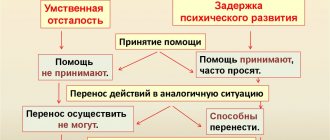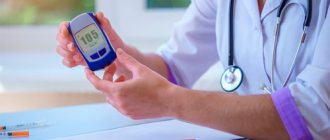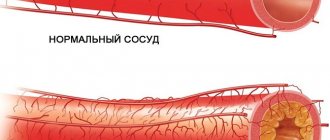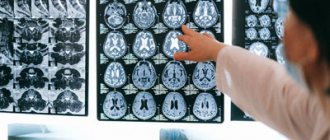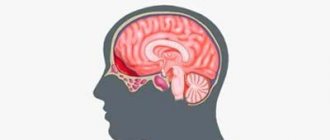Who is the LHC indicated for?
For children
| For adults
|
Indications for use
In pediatrics, bioacoustic brain correction is used with high efficiency to treat the following psychiatric and neurological diseases in children:
- violations of the abilities of schoolchildren and preschoolers to adapt to a team;
- diencephalic disorders and neurocirculatory dystonia;
- hypoxic-ischemic lesions of the central nervous system suffered during the perinatal (perinatal) period;
- impairments in school learning abilities (dyscalculia, dyslexia, dysgraphia);
- cerebro-asthenic syndrome;
- consequences of traumatic brain injuries, recovery from them;
- sleep disorders (dyssomnias);
- syndrome of obsessive movements, nervous tics and tic-like hyperkinesis;
- functional enuresis, neurosis and similar diseases;
- autism and autism spectrum disorders;
- expressive and receptive speech disorders (dysarthria, stuttering, sensorimotor and motor alalia);
- developmental disorders of higher cortical functions, delayed psycho-speech development;
- attention deficit hyperactivity disorder.
When normalizing the psychophysiological state, bioacoustic correction of the brain is used to implement the following measures:
- increasing resistance to stress, helping people in professions that involve a high degree of nervous and mental stress (intellectual workers, representatives of management and business, operators, security forces, military personnel and rescuers), helping athletes prepare for competitions;
- improving the health of the body as a whole and preventing mental disorders: improving memory and attention, preventing stress-related disorders, increasing performance, adaptive capabilities, normalizing self-regulation;
- elimination of chronic fatigue and loss syndromes, post-traumatic stress and the consequences of stressful conditions;
- elimination of the consequences of traumatic brain injuries, organic brain lesions, as well as acute cerebrovascular accidents, in particular, normalizing the psychophysiological status, cognitive functions and eliminating speech disorders;
- diencephalic vegetative-vascular disorders and parasympathetic crises;
- eliminating problems with appetite and sleep;
- normalization of the emotional state, getting rid of problems such as decreased mood, internal tension, decreased performance, increased fatigue, irritability, restlessness and anxiety;
- combating mental disorders such as astheno-depressive and anxiety syndromes, as well as panic attacks (phobic syndrome);
- treatment of neurological and neurotic diseases.
Bioacoustic brain correction is also effectively used to treat psychosomatic diseases.
In cardiology:
- as a preventive measure to combat diseases of the cardiovascular system;
- to improve regional and systemic hemodynamics;
- to eliminate the consequences of myocardial infarction by normalizing the patient’s psychophysiological state, reducing or stopping angiotic pain;
- in order to normalize blood pressure in certain diseases (with 2 or 3 degrees of arterial hypertension, 1 or 2 stages of hypertension).
In gastroenterology:
- with functional constipation;
- to relieve pain and normalize the performance of the intestines’ functions in case of irritable bowel syndrome;
- to normalize vegetative status and appetite, eliminate pain, increase the level of self-regulation and reduce the degree of psycho-emotional stress in colitis, gastritis, as well as ulcers of the duodenum and stomach.
In dermatology:
- bioacoustic correction of the brain allows for a longer period of remission, reducing the time required to heal and eliminate itching in atopic dermatitis.
In pulmonology:
- to normalize the body’s condition after pneumonia;
- in bronchial asthma to improve the condition of the central nervous system, due to which the manifestations of hypercapnia and hypoxemia are relieved, bronchial patency improves, lung capacity increases, and breathing becomes less frequent.
In narcology:
- to improve the body’s ability to resist various addictions, in particular drug, alcohol, gambling, and overeating;
- to relieve patients suffering from drug addiction, alcoholism, and post-withdrawal disorders.
To relieve pain syndromes:
- relieving post-traumatic pain;
- relieving patients suffering from diseases of internal organs from pain syndromes.
- eliminating headaches of various origins.
Duration of correction
A course of bioacoustic brain correction is recommended, consisting of 10-15 sessions lasting from 15 to 25 minutes each.
Contraindications
BAK is a safe procedure. However, this procedure has a number of contraindications:
- acute postoperative period,
- hypertensive crisis,
- acute infectious diseases,
- acute skull injuries,
- acute disorders of cerebral and spinal circulation,
- myocardial infarction in the acute period,
- acute and subacute inflammatory diseases of the brain and spinal cord, its membranes (myelitis, meningitis, etc.),
- acute bleeding,
- with caution - epilepsy.
How does micropolarization of the brain occur?
Micropolarization for children , as well as for adult patients, follows a standard scenario. The patient does not experience discomfort or pain and can go about his business (read, play, watch cartoons or a movie) during the diagnostic process. The treatment session takes a short time - from 15 to 30 minutes. The procedure takes place in the following sequence:
- The patient is positioned on a comfortable chair, sitting or reclining.
- The doctor places electrodes on the frontal, motor, and temporal areas of the brain (depending on the specific disease and the need for local effects of polarization stimulation on certain areas).
Unlike treatment with high voltage alternating current, transcranial micropolarization involves exclusively therapeutic effects on the brain with direct electric current at low voltage. There is no harm to the body, side effects or complications. In this case, the effect on the central nervous system occurs without the use of drugs.
Treatment results
In children
The overall effect for various diseases is a confirmed improvement in EEG parameters, normalization of the psycho-emotional state and improved sleep.
ADHD of various etiologies
In 85% of cases there is a 2-2.5-fold decrease in the number of clinical signs of ADHD and symptom severity indicators. Without drug treatment.
Transient tics
In 85% of cases - complete disappearance of symptoms (in severe cases, a significant decrease in the number of tics), in 15% - a decrease in hyperkinetic movements (can intensify during stressful situations). Without drug treatment.
Enuresis (associated with MMD)
In 80% of cases, there is complete disappearance of symptoms (in severe cases, a significant decrease in the number of urinations per night or the number of times per week). Without drug treatment.
Psychopathy and emotional disorders in adolescence
In 70% of cases there is a decrease in reactive anxiety, improvement in SAN indicators, and behavioral correction. Without drug treatment.
ZPR of cerebral-organic origin
Leveling the emotional background, stimulating private mental functions, accelerating or, in severe cases, launching speech development, increasing learning ability. Acceleration by 2.5 times or more of classical treatment methods (drug treatment and developmental exercises).
In adults
The overall effect in various diseases is a confirmed improvement in EEG parameters, well-being, activity, mood and other clinical indicators, a decrease in reactive and personal anxiety.
Neurosis with asthenic syndrome
Improvements in 80% of cases, according to specialists from the Neurosis Clinic of St. Petersburg. It is carried out in complex therapy, and in mild forms - independently.
Neurosis with depressive syndrome
Improvements in 70% of cases, according to specialists from the Neurosis Clinic of St. Petersburg. It is carried out in complex therapy, and in mild forms - independently.
Autonomic disorders, psychosomatic disorders (neurodermatitis, etc.)
Improvements in 85% of cases. It is carried out in complex therapy, and in mild forms - independently.
Neurosis with phobic syndrome, obsessive states, panic attacks
Improvements in 80% of cases. It is carried out in complex therapy, and in mild forms - independently.
What are the advantages of the LHC method?
- non-drug, non-invasive treatment of functional disorders of the central nervous system;
- no addiction, side effects and age restrictions;
- high efficiency proven by many years of use;
- compatibility and acceleration of other types of treatment (biophysical activation of neuromotor structures)
- reduction of drug load, for some nosologies the possibility of replacing drug treatment.
- Each LHC procedure is carried out under the control of EEG recording via 4 channels in on-line mode (review and indexometric analysis).
- after each procedure, it is possible to evaluate changes in various EEG parameters (indexometric, pattern, cross-correlation analyses).
How does LHC differ from classical biofeedback (BFB) methods?
- Possibility of use without age restrictions
- possibility of use in case of deficits in the cognitive and emotional-volitional spheres of mental activity
- complete and accurate display of EEG parameters in a sound image: - time-frequency - amplitude - spatial
- work in real time
- constant hardware conversion delay 20-30 ms
How to get your hearing back?
As we have already said, in most cases it is impossible to restore hearing. However, there are simple instructions that will help you navigate and take the first step. We will talk about electro-acoustic hearing aids using hearing aids, since cochlear implantation is a complex process that requires obtaining a quota.
So, if you decide to return to a world full of live human communication and your favorite sounds, then take a closer look at these instructions.
How to restore hearing with hearing loss? 8 simple steps
Step 1: Recognize the problem.
Time: from 1 day to 7 years. If you have already firmly decided to overcome all the problems of hearing loss and restore your hearing, then we congratulate you. If not, pay close attention to your ability to hear. Experiment in conversations with loved ones - do you hear the same as they do? Can you hear your name from the next room?
Step 2. Diagnostics.
Time: 10-15 minutes. The first thing you need to do is get your hearing checked. The most reliable method, in our opinion, is pure tone threshold audiometry. The result of the study will be an audiogram - a graph that clearly demonstrates what kind of hearing problems you have (if any).
Step 3: Don't panic.
If your fears are confirmed and your hearing is reduced. According to the World Health Organization, today there are more than 460,000,000 people in the world with hearing problems. Of course, this is a worthy reason to be upset, but you have already taken the main step - the first.
Step 4. Selecting a hearing aid.
Time: from 15 minutes to 2 hours. This is an important step that you can do either on your own or with the help of a professional. If you decide to choose a hearing aid yourself, then you will have to spend a huge amount of time in the catalog of hearing aids and on specialized websites, since without minimal training it is quite difficult to understand all the intricacies. If you have chosen the help of a specialist, then tell him the key information: why do you need a hearing aid (work, study, watching TV, communication), what budget would be nice to meet (economy, optimum, business), what requirements do you have for your hearing aid? additional functions of the device (improving speech intelligibility, suppressing wind noise and feedback).
Step 5: Setting up your hearing aid.
Time: 15 minutes. Once you've chosen a device that meets all your requirements, it's time to set it up. Setting up a digital hearing aid is carried out only by a specialist using specialized equipment. Any adjuster needs your audiogram. If you are promised a setup without it, you are most likely being scammed.
Step 6. Adaptation.
Time: from 2 weeks to 2 months. So, it would seem that you have carried out electroacoustic hearing correction using a digital hearing aid, but the correction process does not end with the purchase of the device. Over a long period of time without sound, the brain becomes unaccustomed to processing sound signals, and when you begin to hear sharply, you hear everything around you. You hear your own breathing, the noise of cars, the ticking of a clock - all those sounds that a person who has not heard for a long time is the first to forget. It's incredibly annoying at first. Everything seems intrusive and too loud. This is the response of the brain, which strives for a state of rest. Please be patient. After a few weeks, he will get used to processing large amounts of information again.
Step 7. Additional settings.
Time: 15-20 minutes. After two to three weeks of wearing a hearing aid, you should be invited by a specialist from the institution where you are undergoing correction and have a conversation. He will ask you whether you are comfortable, whether everything suits you, and, if necessary, he will make additional adjustments (so that the ticking is not so loud).
Step 8. Return to the world of sounds.
The adaptation period is over, and you can again freely communicate with loved ones, go to the theater and cinema, watch your favorite TV series without turning the volume to maximum. You may be thinking about returning to work or school that you may have had to give up due to your hearing loss. Now your hearing capabilities are unlimited. You are again a full-fledged member of society. We congratulate you!
Hearing specialists recommend that people with hearing loss get a hearing test at least once every six months. This is necessary for accurate adjustment of digital hearing aids in case your hearing changes.
